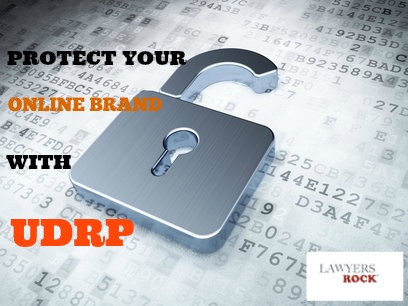 So you’ve found the perfect name and branding for your business, registered the trademark with the USPTO, and now you’re ready to register the domain name.
So you’ve found the perfect name and branding for your business, registered the trademark with the USPTO, and now you’re ready to register the domain name.
Or perhaps your business is already well established and you’re preparing to finally create a significant online presence.
But wait, what’s this? Someone has already registered the domain name that matches your trademark in anticipation of your business needs and they won’t release it to you without a hefty fee in return.
Is it back to the drawing board to reinvent your brand?
Are you destined for a long, drawn-out legal battle that could end up costing more than just paying the person the ransom?
Or do you have some other option at your disposal?
“Cybersquatting” has been a problem for businesses of all sizes for as long as the Internet has been around. It refers to the practice of registering, selling or using a domain name with the intent to profit from the goodwill of someone else’s trademark.
Often, cybersquatters register domain names in bulk to take financial advantage of mark owners, or to create problems for their business competitors.
Fortunately, the Internet Corporation for Assigned Names and Numbers (ICANN) has a solution for businesses whose trademarks have been registered as domain names without their consent: Uniform Domain-Name Dispute-Resolution Policy (UDRP) proceeding.
WHAT IS UDRP PROCEEDING? HOW DOES IT WORK?
A UDRP proceeding is an alternative to traditional litigation that has been available to trademark owners since ICANN first launched the alternative dispute resolution program on December 1, 1999. The National Arbitration Forum (FORUM), an international dispute resolution provider, or the World Intellectual Property Organization (WIPO) handle such disputes.
Since the inception of UDRP proceedings, FORUM has handled over 20,000 such disputes from over 40 countries, while WIPO has handled over 30,000 such disputes among its 188 member states.
UDRP proceedings apply to legacy top level domains, like .com, .net and .org, some territory code top-level domains, like .asia, .eu, .uk), as well as to the over 400 new generic Top-Level Domains (gTLDs) recently released, such as .aero, .biz, .cat, .coop, .info, .jobs, .mobi, .museum, .name, .pro, .travel and .tel. (ICANN plans to introduce 1300 new gTLDs in the coming years…if you didn’t know it, there is a way for you to essentially own a piece of the Internet by registering a gTLD!).
When a registrant chooses a domain name, organizations like ICANN, NeuStar, IMC Registry, and New.net require that they “represent and warrant” that registering the name “will not infringe upon or otherwise violate the rights of any third party.”
In the event that a third party claims infringement on their mark, the registrant is required to participate in an arbitration-like proceeding to settle the dispute.
In order to have the domain name transferred to the trademark owner, the challenging party must file a complaint with either WIPO or FORUM. The party that has registered the domain at issue has 20 days to file a response. If no response is filed, then the deciding panel will only consider the challenging party’s submission.
Once a panel is assigned to hear the case, the challenging party must prove the following three elements:
- Identical and/or Confusingly Similar: The domain name registered is identical or confusingly similar to a trademark or service mark in which the complainant has rights.
- Right or Legitimate Interest: The registrant has no rights or legitimate interests in respect to the domain name.
- Registration and Use in Bad Faith: The domain name has been registered and is being used in bad faith. The panel will consider, among other things, whether the domain name was registered primarily for the purpose of selling or transferring the domain name to the complainant, disrupting the business of a competitor, or to create a likelihood of confusion with the complainant’s mark.
WHY SHOULD YOU INITIATE A UDRP PROCEEDING?
In today’s tech-based world, domain names are essential and valuable assets that allow customers to easily identify and interact with your business. Someone improperly using your mark can create a whole range of problems including customer confusion, damaged reputation, and decreased sales.
Owners need to take the necessary steps to protect their businesses and profits. Legal battles can be costly and time-consuming for businesses of any size, but they are especially detrimental to smaller businesses with limited capital so UDRP proceedings are a welcome option.
UDRP proceedings offer a relatively quick and inexpensive internationally recognized resolution by a panel of neutral experts. FORUM and WIPO work with all parties, including registrants, to guide them through the process. These proceedings offer many advantages over litigation, such as:
- Claims can generally be initiated for as low as $1300.
- Decisions are often reached in as little as 30-45 days from time of filing.
- Panelists can conduct the proceedings in over a dozen languages including English, French, Japanese, Spanish, Russian, and Chinese.
- The procedures follow established rules and policies, and are decided primarily by intellectual property lawyers with vast experience in trademark, copyright, and e-commerce, and
- In many jurisdictions, parties have the option to end the arbitration proceeding and file a lawsuit if something unexpected or urgent comes up. Parties also have the right to appeal a UDRP decision in a court with competent jurisdiction.
So, if you’re faced with a cybersquatter who is holding up the progress of your online initiatives and you have a strong position (i.e., you own a registered trademark), you may want to consider initiating a UDRP proceeding and take back what’s yours!
Thank you to Brett Greshko, M.E.T.A.L. Intern, for your help with this blog!

1 Comment
[…] How To Protect Your Online Brand with UDRP Proceedings […]